
This weapon was designed for Britain's Treaty Cruisers of the 1920s. Similar to other cruisers of that era, the mountings for these weapons were given a high maximum elevation in order to provide an anti-aircraft capability. However, the training and elevation gear was inefficient and both the elevation and training rates were too slow to allow these mountings to be useful in that role.
The complex nature of the early versions of these mountings, the Mark I and Mark I*, gave trouble for a number of years. Considerable attention was paid to these faults, especially in 1927 and 1928, before these ships were accepted into service. After the initial trials, the training and elevation rates were reduced prior to commissioning and reduced still further during the 1930s in an effort to improve the operational performance of the turrets.
Most of the problems seem to have been satisfactorily resolved prior to the start of World War II, but HMS London reported as late as June 1938 that "one would wish that the 8in mountings and torpedoes would behave as they should. The prolonged firing of 20 rounds per gun from London was a disappointment on the material side."
The later Mark II mountings appear to have been much more reliable, with the first gun trials for HMS York in February 1930 being so successful that they took only four hours to complete. The Mark II was also successful in the battle with Bismarck in May 1941. During this battle, HMS Norfolk in about 90 minutes fired 527 rounds with minor problems, although the right gun in "X" turret only fired eight rounds (compared to 103 rounds from the right gun in "B" turret), probably because of double ramming of the cordite charges. Her Commander, Capt. A.J.L. Phillips reported: "For 8in Mark II mountings, the final state of affairs and the percentage output are considered most satisfactory." As a weight saving measure, the Mark II* version of this mounting, used only on HMS Exeter, had a significantly reduced maximum elevation.
On 26 July 1929, HMS Devonshire suffered a misfire with the left gun in "X" turret. A crewman, unaware of the issue, opened the breech too soon and the inrush of oxygen set off the charges. One shell and a number of cordite bags were ignited, blowing off the turret roof and killing one officer and seventeen crewmen. The investigation into the accident found that the "interlock" (salvo latch) for this gun had been incorrectly assembled, allowing the breech to be opened even though the gun had not fired. Fortunately, the flash protection of the mounting had prevented the explosion from penetrating down into the magazine. The burned-out turret was removed and replaced with a spare and Devonshire was back in commission by January 1930. The damaged turret was repaired and sent to Plymouth as a spare. "X" turret on HMS Norfolk was also removed for repairs after being badly damaged in her fight with <>Scharnhorst in December 1943. It was reinstalled in August 1944, although her other repairs took until November to complete.
The original design was A tube, wire, B tube, overlapping jacket, breech ring and breech-bush and these guns were designated as Mark VIII* upon completion. Owing to troubles with the A tube forging, an inner A tube was added to half of the wire wound guns. After relining with a tapered inner A tube, guns were then designated as Mark VIII. Two prototypes and the last 26 guns built did not use wire but instead used an autofrettaged A tube, B tube and jacket. These were designated as Mark VIII**. All guns used a Welin breech-block with hydraulic or hand worked Asbury mechanism and were interchangeable with each other. "Naval Weapons of World War Two" says that a total of 168 guns were produced, including the two prototypes built without wire, but "British Naval Gun Mountings" notes that this number probably does not include the 37 new guns that Elswick built in 1940-43.
Six Mark VIII** guns were used as coastal artillery in the Dover - Folkestone area during World War II. These were in single mountings capable of +70 degree elevation.
| Designation | 8"/50 (20.3 cm) Mark VIII |
|---|---|
| Ship Class Used On | Kent, London, Norfolk and York classes
RAN Australia class (modified Kent) |
| Date Of Design | 1923 |
| Date In Service | 1927 |
| Gun Weight | Mark VIII and VIII*: 38,528 lbs. (17,476 kg)
Mark VIII**: 38,640 lbs. (17,527 kg) |
| Gun Length oa | 413.1 in (10.493 m) |
| Bore Length | 400.0 in (10.160 m) |
| Rifling Length | 346.3 in (8.796 m) |
| Grooves | (48) 0.055 in deep x 0.376 (1.40 x 9.55 mm) |
| Lands | 0.1476 in (3.749 mm) |
| Twist | Uniform RH 1 in 30 |
| Chamber Volume | 3,646 in3 (59.75 dm3) |
| Rate Of Fire | 3 - 6 rounds per minute 1 |
- ^The original Naval Staff requirement for these weapons was 12 rounds per minute, an impossibly high figure for the time. The requirement was ultimately reduced to six rounds per minute. However, "British Cruisers of World War Two" states that this rate was never reached during wartime service and that the maximum sustained ROF in action was actually 3 to 4 rounds per minute. During trials, HMS Kent did achieve a ROF of 5 rounds per minute for a brief time.
| Type | Bag |
|---|---|
| Projectile Types and Weights | SAPC - 256 lbs. (116.1 kg)
HE - 256 lbs. (116.1 kg) 1a |
| Bursting Charge | SAPC - 11.5 lbs. (5.2 kg)
HE - about 23 lbs. (10 kg) |
| Projectile Length | SAPC - 36 in (91.4 cm)
HE - N/A |
| Propellant Charge | 66.0 lbs. (29.94 kg) SC 205 2a |
| Muzzle Velocity | 2,805 fps (855 mps) 3a |
| Working Pressure | 20.5 tons/in2 (3,230 kg/cm2) |
| Approximate Barrel Life | 550 rounds |
| Magazine capacity per gun 4a | Kent class - 130 rounds
London class - 150 rounds Dorsetshire class - 150 rounds York class - 172.5 rounds |
- ^Australian cruisers ran out of British HE shells in 1942 and were unable to obtain more due to other priorities at the munitions factories. Experiments showed that USN 8in (20.3 cm) HC shells with reduced charges could be substituted and these were then used for shore bombardment missions for the rest of the war.
- ^Propellant was in halves.
- ^The original muzzle velocity was 2,900 fps (884 mps) with a 72.25 lbs. (32.77 kg) SC charge, but this was derated to the figure given above in order to reduce dispersion and increase liner life.
- ^Outfits were mainly SAPC with 20 rounds of HE per gun.
| Elevation | Range | Striking Velocity | Angle of Fall | Flight Time |
|---|---|---|---|---|
| 2.1 degrees | 5,000 yards (4,570 m) | 2,154 fps (657 mps) | 2.5 degrees | 6.2 seconds |
| 5.2 degrees | 10,000 yards (9,140 m) | 1,683 fps (513 mps) | 7.3 degrees | 14.1 seconds |
| 9.8 degrees | 15,000 yards (13,720 m) | 1,322 fps (403 mps) | 15.8 degrees | 24.7 seconds |
| 16.5 degrees | 20,000 yards (18,290 m) | 1,169 fps (356 mps) | 28.5 degrees | 38.4 seconds |
| 26.7 degrees | 25,000 yards (22,860 m) | 1,164 fps (355 mps) | 43.1 degrees | 55.9 seconds |
| 41.5 degrees | 29,000 yards (26,520 m) | 1,240 fps (378 mps) | 78.9 degrees | 78.6 seconds |
| 45 degrees | 30,650 yards (28,030 m) | - | - | - |
| Designation | Twin Mounts 1b 2b Kent (4) and Australia (4) 3b: Mark I 4b London (4): Mark I* 5b Norfolk (4) and York (3): Mark II 6b Exeter (3): Mark II* |
|---|---|
| Weight 7b | Original Estimate
Mark I: 155 tons (157 mt) Mark I*: 159.5 tons (162 mt) Mark II: 168.8 tons (172 mt) Mark II*: N/A As Completed
|
| Elevation | Mark I, I* and II: -3 / +70 degrees
Mark II*: -3 / +50 degrees |
| Elevation Rate 8b | Mark I: 10 degrees per second 9b Mark I*, Mark II and Mark II*: 4 - 5.5 degrees per second |
| Train | about +150 / -150 degrees |
| Train Rate 10b | As originally designed: 8 degrees per second
Final design: 5 - 6 degrees per second |
| Gun recoil | 24 in (61 cm) |
| Loading Angle | Mark I and I*: 10 degrees
Mark II and II*: 6 degrees |
- ^Magazines and shell rooms were on the same level. Charges were passed to the handling room through flashtight revolving scuttles and placed on waiting trays attached to the hoist trunk. This contained a cordite hoist for each gun and each hoist had two cages so that while one was being unloaded, the other cage was loading in the handling room. Charges were horizontal when lifted. In the shell rooms, shells were handled by powered overhead gear. At each side there was a transporter hoist which delivered shells to the shell ring in the shell handling room. The shell ring was hydraulically powered and ran on a roller path bolted to the deck of the shell handling room. It had 30 compartments, each handling one shell in a vertical position. Two hand-operated shell bogies which could be locked to one of the compartments to pick up a shell and then moved and locked to the hoist trunk to deliver the shell to the hoist. There was one shell hoist per gun. Both powder and shell hoists rad directly up to the gunhouse without an intermediary handling room. In the gunhouse, charges were rammed by hand from the hoist cage to the cordite compartment of the hollow rammer. The shell hoist deposited the projectiles in rear of the gun in a shell tilting tray. The hollow rammer pivoted from the cordite hoist to the breech and rammed both the shell and the charges simultaneously by the same stroke.
- ^These mountings used one hydraulic pump per mounting located on the revolving structure and driven by a 120 bhp electric motor. There was also a hydraulic pump in "A" and "X" shell rooms to power the fittings used in the bow and stern shell rooms and shell handling rooms. Mineral oil was used as the pressure medium to allow the use of lighter and lower cost steel in place of brass piping and to avoid corrosion in the pusher hoists, which were "most inaccessible."
- ^Australia, Devonshire and Sussex had "X" turret removed during the war as weight compensation for additional light AA, radar and other electronic equipment.
- ^In the Mark I mountings, the shell handling room was unprotected and was located above the cordite handling room, which was in a protected volume.
- ^The major difference in the Mark I* from the Mark I was that the elevation rate was reduced to 5.5 degrees per second. See elevation note below.
- ^The Mark II mountings had the cordite and shell rooms combined in a single protected volume, which also had the effect of simplifying the ammunition supply to the hoists.
- ^The estimated versus actual weights of these mountings show the difficulties involved during the design phase in correctly computing weight. As these were Treaty-limited warships, these overruns for the main armament had to be compensated for by taking weight out of other areas, such as reducing the number of hull scantlings. It was originally hoped that the Mark II mounting would be much lighter than the Mark I, but the reverse turned out to be the case.
- ^Elevation in the Mark I and Mark I* was by a 13 bhp swashplate engine driving through gearing and worm toothed arcs on the underside of the cradle. The Mark II and Mark II* were changed to the cylinder and ram type which could be more accurately controlled.
- ^This elevation rate was found to be impossible to control accurately and was reduced to 4 degrees per second.
- ^Training was by two 40 bhp swashplate engines of which only one was used at a time and which drove a worm gear. These were capable of training at 8 degrees per second, but were limited to 6 degrees per second by other demands on the pump and to only 2 degrees per second during loading operations.
- The gun axes were 84 in (213 cm) apart on all versions.
- Armor protection was 0.98 in (2.5 cm) (40 lbs.) on all sides and the roof.
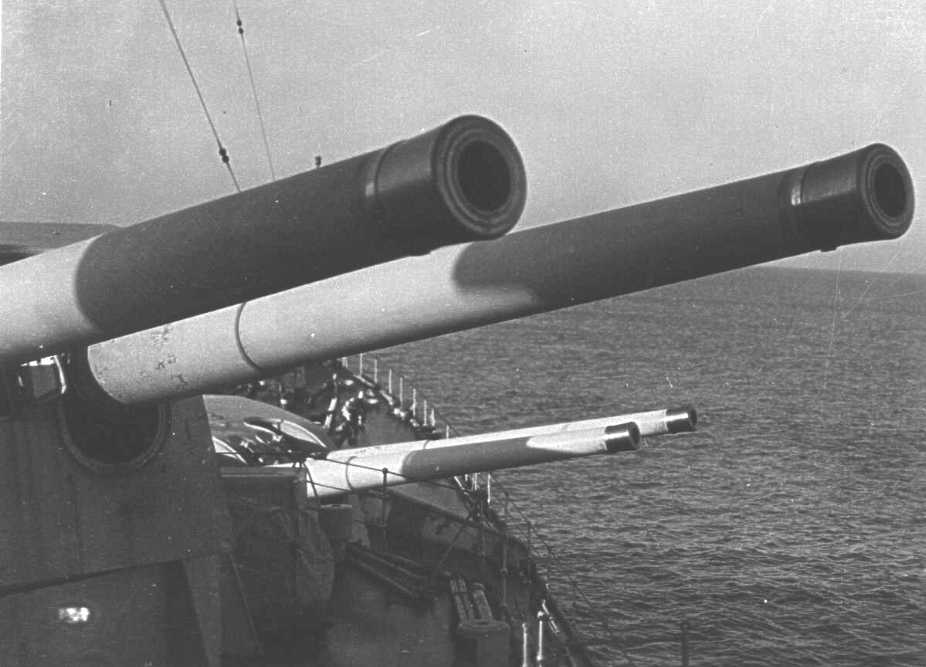
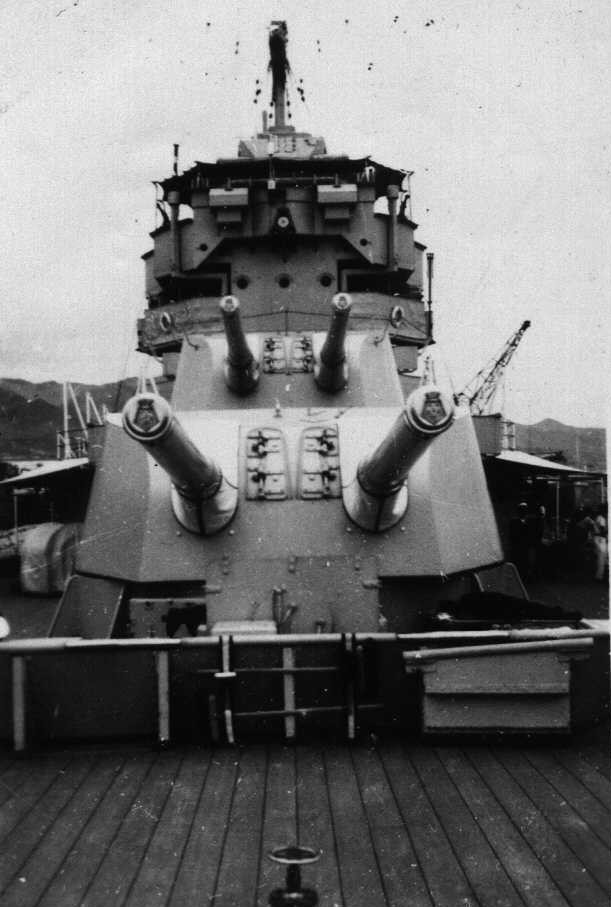
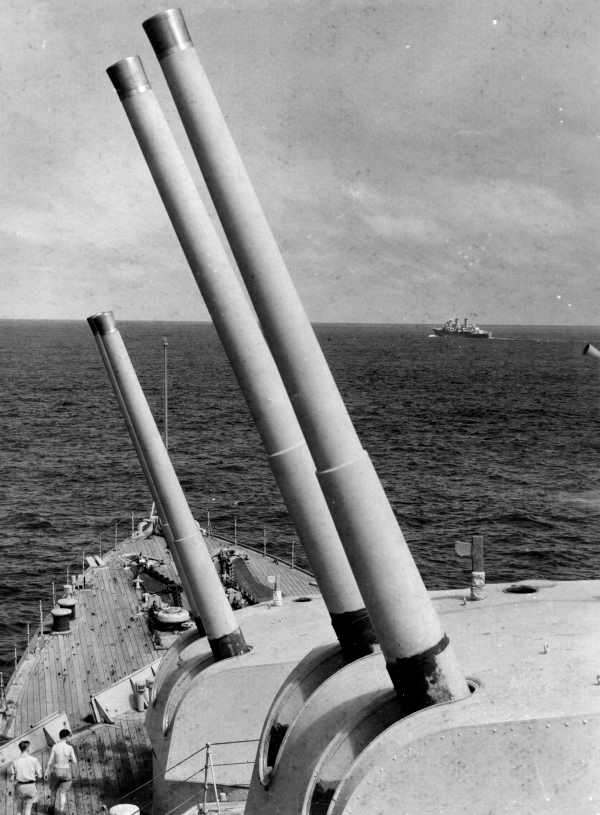
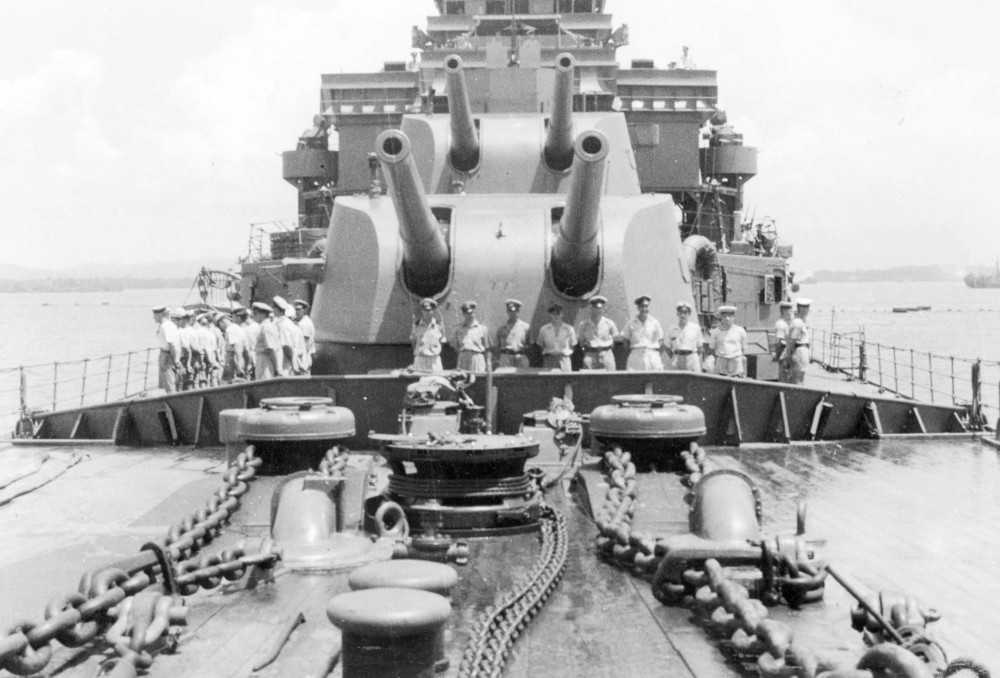
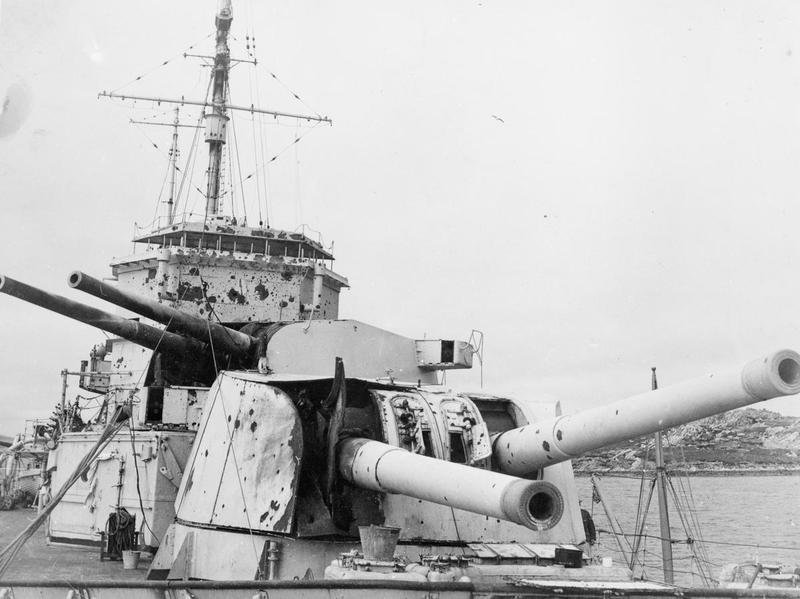
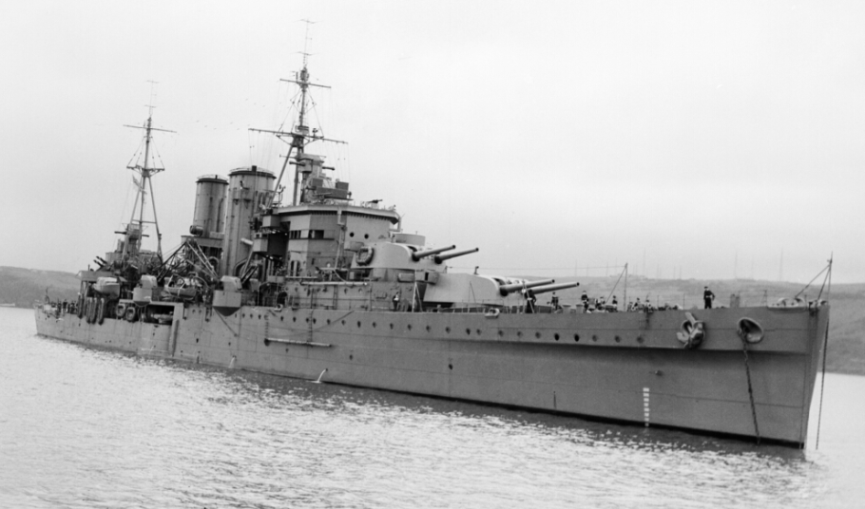
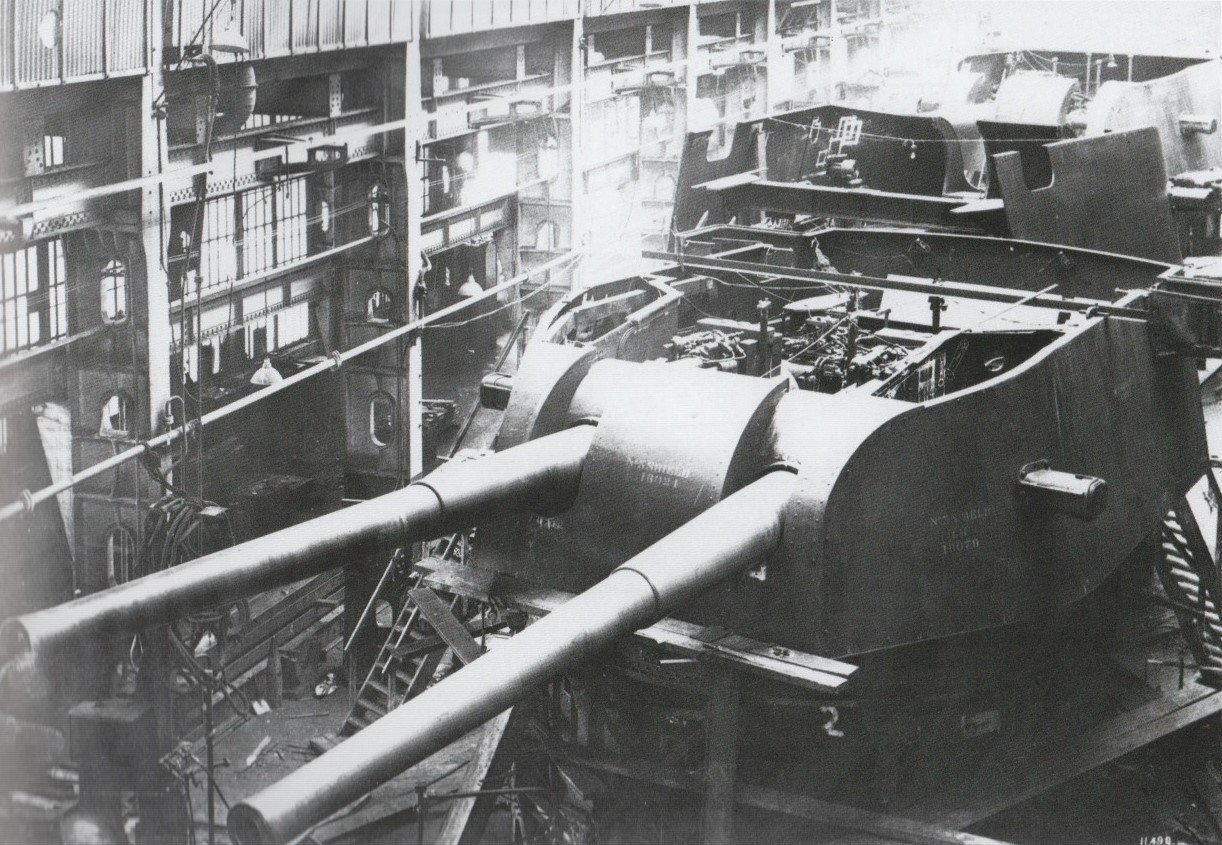

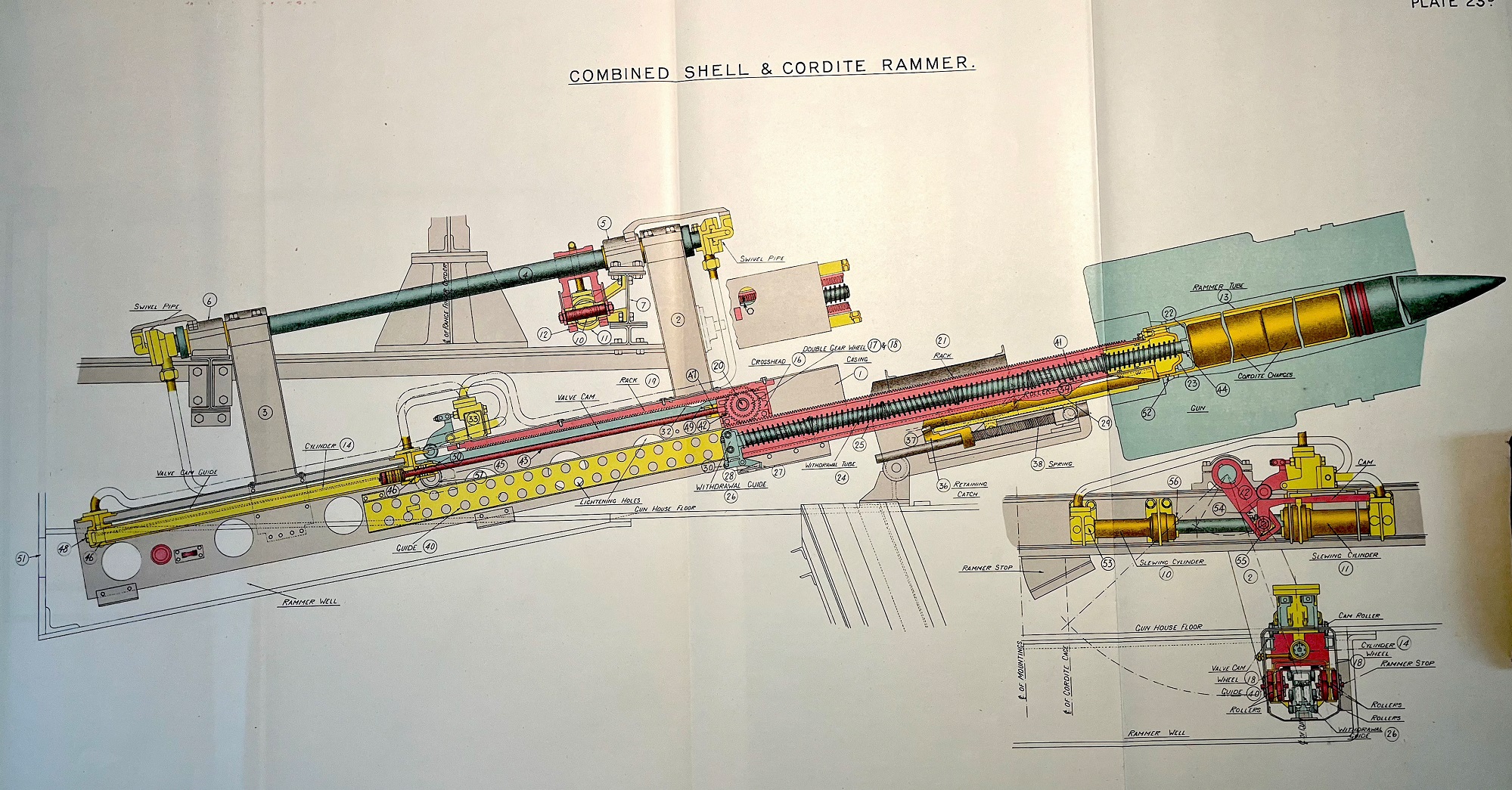

The Vickers Photographic Archive
See photograph numbers 7119 and 7120
Australian War Memorial
Pictures of 8" (20.3 cm) guns being relined at Bendigo Ordnance Factory: 086425 and P00444.161
Additional pictures of British 8" (20.3 cm) naval guns in Australian service: HMAS 8 inch guns
"British Naval Gun Mountings: From 1890: 18-inch to 4.5-inch Mark 8" by Ian Buxton
"Naval Weapons of World War Two" and "British Naval Guns 1880-1945 No 8" article in "Warship Volume VII" both by John Campbell
"As Luck Would Have It: The Reminiscences of an Australian Sailor" by Sir John Collins
"The Price of Disobedience: The Battle of the River Plate Reconsidered" by Eric Grove
"British Cruisers of World War Two" by Alan Raven and John Roberts
"Cruisers of World War Two" by M.J. Whitley
---
From the Devon and Exeter Gazette of 31 July 1929: "OVER EAGERNESS PROBABLE CAUSE OF THE NAVAL DISASTER - An Admiralty communique last night
attributes the accident on HMS Devonshire in the Eastern Mediterranean, to hangfire of a very short duration in one gun of an eight-inch turret.
It was probably thought momentarily that the gun fired, and the operation of reloading was commenced. The breech was initially opened, and before
the mistake could be rectified, the charge in the gun exploded. The force of the explosion also ignited the cordite charges waiting for the next round."
---
"C.B. 1797 - Handbook for 8-inch B.L. Mark VIII* Gun on Twin Mark I Mounting" by Admiralty, S.W.1. Gunnery Branch, September 1928
---
Special help from Chris Campbell and Neil Stirling
01 August 2008 - Benchmark
18 February 2009 - Added additional construction details
25 January 2010 - Recropped photograph of HMS York for better view
19 June 2012 - Added photograph of HMAS Shropshire
07 January 2013 - Added photograph of Australian cruiser
06 May 2014 - Added photograph of Exeter following repairs
01 December 2015 - Changed Vickers Photographic Archive links to point at Wayback Archive and updated links to Australian War Memorial
24 September 2018 - Converted to HTML 5 format, reorganized notes and added data to Range Table
19 February 2019 - Corrected typographical error
17 April 2021 - Corrected range table
19 February 2022 - Changed reason for HMS Devonshire explosion, added ammunition details and ammunition handling note
15 September 2023 - Added note regarding use of HC ammunition on Australian cruisers
22 March 2024 - Added sketches from C.B. 1797
03 August 2024 - Added to caption for SAPC projectile sketch
11 March 2025 - Added comments about HMS Norfolk in battle, more details on the HMS Devonshire explosion, added photograph of mountings
being built at Elswick and much mounting information
